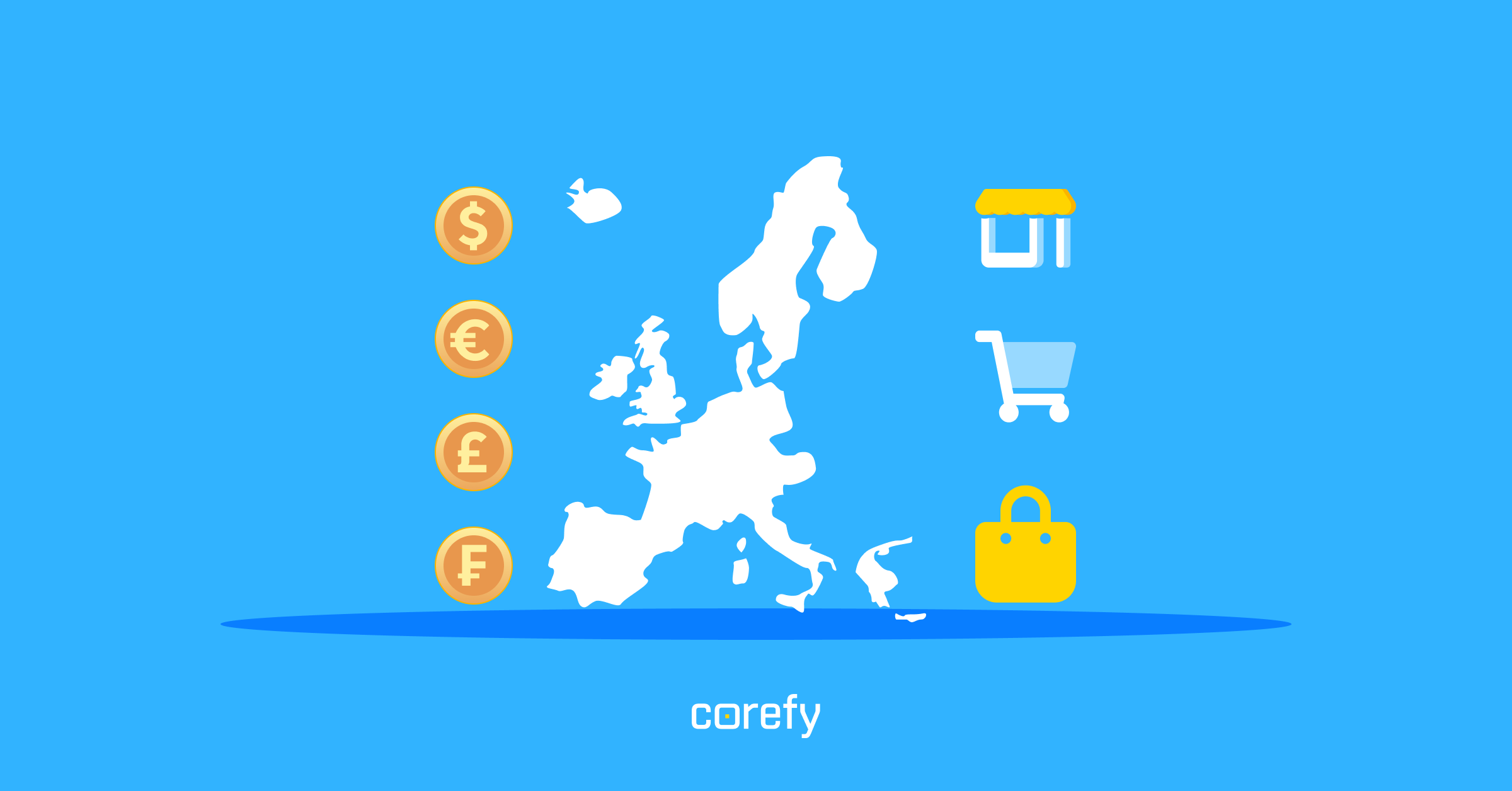Key things to know when entering the Western European market


Are you considering expanding to Western Europe? To do it successfully, you’ll need in-depth knowledge of the e-commerce and payment specificities in this region.
We’ll provide you with all the necessary details about the Western European market and offer some tips on how to enter it quickly. Let’s cut to the chase.
In contrast to emerging markets, Western Europe boasts a well-established e-commerce scene. As of 2022, it held a substantial 67% share, equivalent to €603 billion, of the total B2C turnover in Europe. Southern Europe, though growing, contributed a smaller 16% to the overall market.
Notably, Western European countries lead the way in internet penetration, reaching an impressive 95%, and boasts 87% of e-shopper users. This high connectivity ensures that nearly everyone in the region has access to online shopping opportunities.
The United Kingdom stands out as the third-largest e-commerce market globally, anticipating a 7.5% surge in 2024. In 2022, UK shoppers spent a staggering £110.6 billion online, with mobile transactions claiming the majority at 56.8%
Following closely is Germany, which ranks as the sixth-largest global e-commerce market. Projections indicate a promising annual revenue growth rate of 8.19% for the country's e-commerce sector.
Little information exists about e-commerce development in small countries like Luxembourg, Monaco, and Liechtenstein. However, the high solvency of local consumers makes these countries a tasty morsel to businesses.
What about the most popular e-commerce segments? There is nothing unusual here. Clothing and footwear are in the greatest demand among Western Europeans. Then comes electronics and technology products. Home furnishings, decor, and household goods have seen increased demand online. Consumers appreciate the ease of shopping for home-related items without visiting physical stores.
The way we shop is evolving, pointing to a continued growth in e-commerce, with more traditional stores shifting to online platforms. Given the already strong presence of e-commerce in Western Europe, consumers have high expectations for quality products, speedy delivery, and convenient payment options. If you can meet these expectations, you're sure to earn customer loyalty and establish a successful presence in Western Europe.
Despite the swift advancements in online payment options, consumers in Western Europe continue to show loyalty to traditional payment methods. Notably, card payments are favoured in countries like France (52%), Belgium (47%), and the UK (46%).
While traditional payment methods are still in vogue, e-wallets are rapidly strengthening their positions in the top three most popular payment methods among Western Europeans. Even in the UK, where card usage is significant, e-wallets have gained popularity, accounting for 35% of payments.
In the Netherlands, only 14% of online transactions involve card payments. The preferred digital payment method there is the bank-transfer method iDEAL, commanding a substantial 58% market share.
In Germany, the landscape of payment methods is diverse and fragmented. E-wallets hold a significant share at 33%, closely followed by bank transfers, which make up 30% of the transactions. Card payments, on the other hand, constitute 12% of online transactions in the country.
Here’s a list of the leading payment options in Western European e-commerce:
More and more consumers in Western Europe choose mobile payment solutions' convenience and high security. As the older generation adapts to smartphones, this payment type will become firmly rooted in e-commerce. To make their business accessible to everyone, merchants should carefully study the payment needs of their target audience.
Western Europe boasts a mature and accessible e-commerce landscape with noteworthy growth, making it an attractive market for new entrants. As you prepare to introduce your product, a crucial consideration emerges: How can you swiftly adapt to the diverse payment preferences of local consumers? Here's valuable information to guide you.
Despite the well-established nature of Western Europe's e-commerce market, local consumers remain eager for marketplaces offering quality and affordable products. The importance of service quality, prompt delivery, and superior payment experience cannot be overstated. Relevant payment methods, coupled with robust online security measures and a foundation of trust, are paramount for the growth and success of your business in this demanding market.
Ready to give it a shot and need professional assistance in the knotty world of payments? Corefy provides businesses with a comprehensive solution to tailor and oversee any number and type of payment methods.